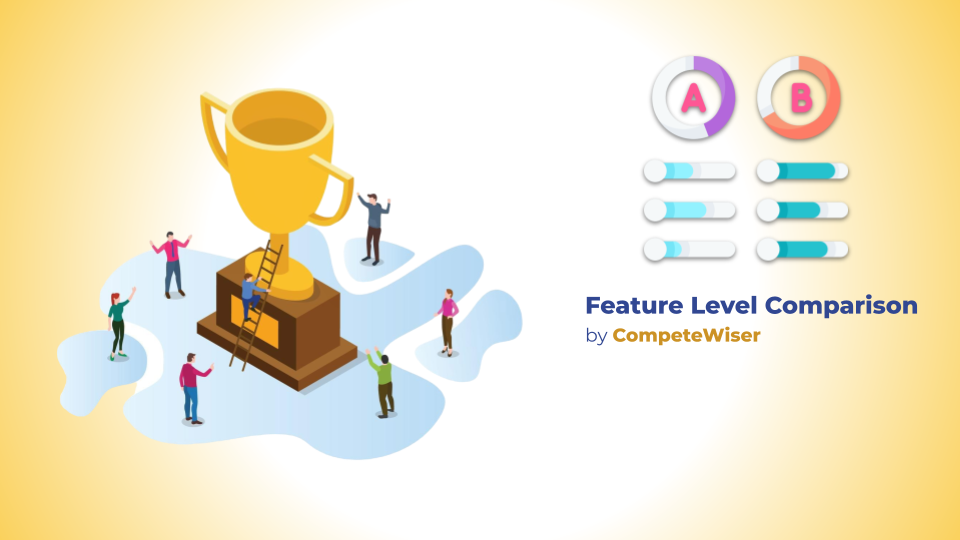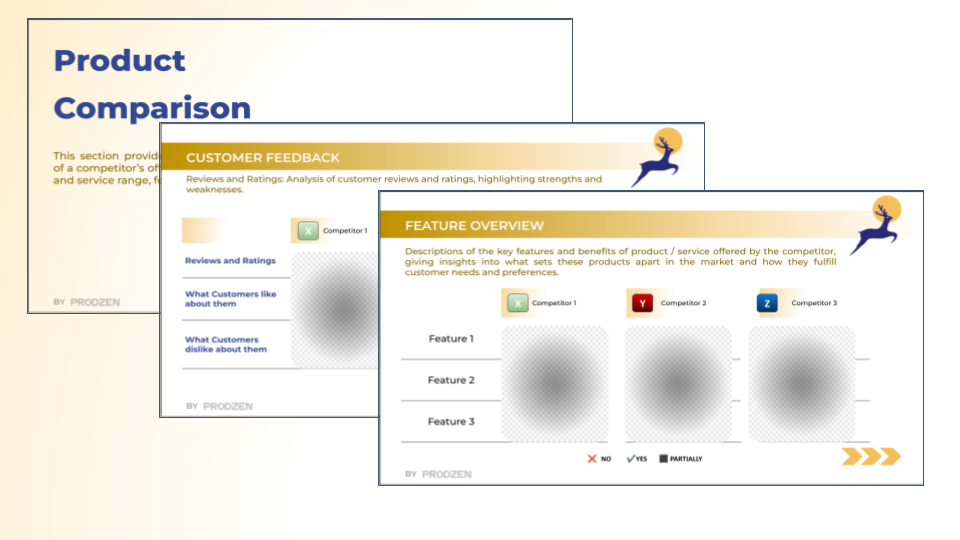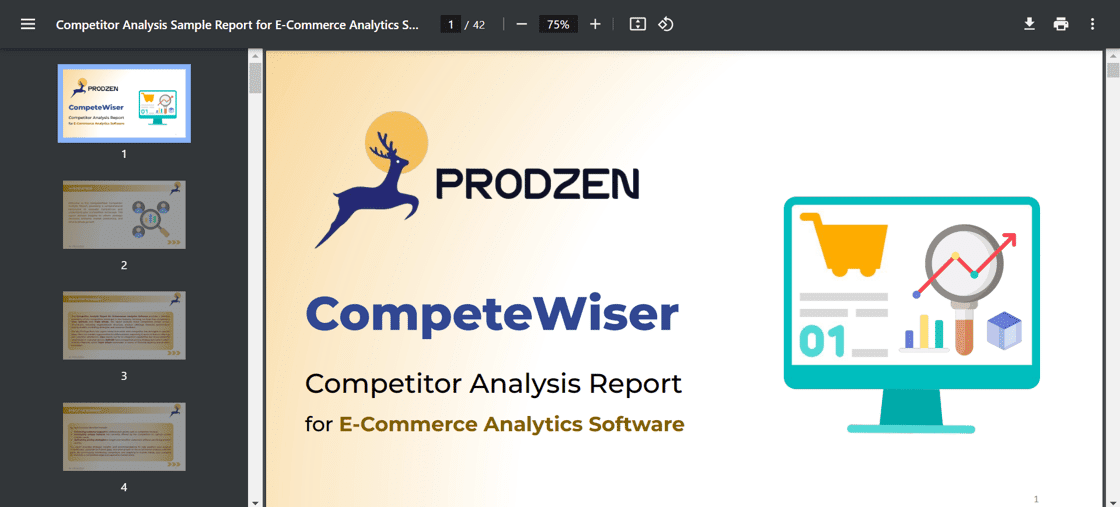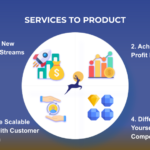
Feature-Level Competitor Analysis: The Key to Building Winning B2B Tech and SaaS Products
- Milind Soni
- October 16, 2024
- Blog
- #competewiser, #featurelevelcompetitoranalysis, #productstrategy
- 0 Comments
Understanding how any B2B tech and SaaS product stacks up against competitors can be the difference between leading the market or falling behind. A feature-level competitor analysis gives you detailed insights into how your competitors’ products perform, what they’re missing, and where your product can stand out. With these insights, you can make smarter decisions, innovate faster, and deliver exactly what your users need.
In this blog, we’ll break down the steps for conducting a feature-level competitor analysis and show how tools like CompeteWiser can streamline the process to give you a competitive edge.
What is Feature-Level Competitor Analysis?
Feature-level competitor analysis involves comparing the specific functionalities of competing products. Instead of looking at broad market data, you dive into individual features to see how your product measures up. This granular approach helps you identify gaps in competitors’ offerings, spot trends that you can capitalize on and prioritize features that will make the most impact.
Why Feature-Level Competitor Analysis is Essential
Conducting a feature-level competitor analysis is crucial for any B2B tech and SaaS business aiming to stay competitive. Here’s why:
- Identify Gaps: By analyzing competitors’ features, you can spot gaps in their offerings that you can fill. These gaps are opportunities to develop unique features that address unmet customer needs, giving your product a competitive advantage.
- Guide Product Roadmap: For product managers, understanding how your product stacks up against competitors at a granular level helps prioritize features that matter most. You can focus on quick wins, address weaknesses, and ensure your roadmap aligns with market demands.
- Enhance User Experience: Analyzing competitor features lets you identify not only what features to offer but also how to improve the user experience (UX). By refining features that competitors may be under-delivering, you provide a more seamless and valuable experience for your users.
Including feature-level insights into your strategy ensures your product remains relevant, innovative, and in line with market expectations.
Ready to start? Let’s walk through the process.
Step 1: Identify Your Key Competitors
Before you can analyze features, you need to know who you’re competing with. Competitors fall into three main categories:
- Direct competitors: Companies offering similar products with similar features.
- Indirect competitors: Solutions that address the same problem differently.
- Emerging competitors: New players disrupting the market with unique approaches.
With CompeteWiser’s competitor tracking, you can easily keep an eye on all of these, ensuring you’re aware of both current and future threats.
Step 2: Define the Features You’ll Compare
You can’t analyze everything, so focus on the features that matter most to your users. Features typically fall into the following categories:
- Core features: Essential functionalities users expect.
- Differentiators: Features that set your product apart.
- Common features: Standard features that you may improve upon.
Pro tip: Use CompeteWiser to get a clear view of which features are most important to your target audience. This ensures you’re focusing on what matters.
Step 3: Gather Data on Competitors’ Features
Now that you know what features you’re analyzing, it’s time to collect data. Here’s how:
- Product Websites: Review competitors’ websites and feature pages.
- Customer Reviews: Dive into platforms like G2 and Capterra to learn what users love (or hate).
- Product Demos: Sign up for free trials to test features firsthand.
- Case Studies: See how these features are applied in real-world scenarios.
Feeling overwhelmed? CompeteWiser automates this process, giving you real-time access to competitor data, so you don’t have to manually track each change.
Step 4: Build a Feature Comparison Matrix
It’s time to organize your findings into a comparison matrix. This visual tool helps you see exactly how your product compares to others, highlighting key strengths, weaknesses, and opportunities.
| Feature | Competitor A | Competitor B | Competitor C | Your Product |
| Task Assignment | Yes | Yes | Yes | Yes |
| Custom Workflows | Basic | Advanced | Yes | In Progress |
| API Integrations | Limited | Extensive | Moderate | Extensive |
Using CompeteWiser’s comparison tools, you can create this matrix automatically, saving you time and providing a clear picture of your competitive landscape.
Step 5: Analyze Strengths, Weaknesses, and Gaps
With your matrix in hand, you can now see where you stand:
- Strengths: Where does your product outshine the competition?
- Weaknesses: What features are competitors doing better?
- Gaps: Are there features none of your competitors have that you could offer?
This analysis gives you clear direction on where to focus your product development efforts.
Step 6: Evaluate the User Experience (UX)
It’s not enough to just match competitors on features—you need to consider how users interact with those features. Are they easy to use? Intuitive? Frustrating?
CompeteWiser’s review mining tool, i.e. Voice of Customer reports help you understand user sentiment, highlighting pain points in competitors’ products that you can improve upon on your own.
Step 7: Prioritize Features in Your Product Roadmap
Now that you know where you stand, use this data to shape your product roadmap. Here’s how:
- Quick Wins: Implement features competitors already have but are high in demand.
- Innovations: Add new features no one else offers to create a competitive edge.
- Enhancements: Improve existing features where competitors are lacking.
With CompeteWiser, you can track ongoing feature updates and adjust your roadmap in real-time.
Step 8: Continuously Monitor Competitors
Competitor analysis is not a one-time task. The SaaS landscape is constantly evolving, and what sets you apart today could be standard tomorrow. Continuous monitoring is key.
CompeteWiser offers real-time competitor updates, so you’re always aware of new features, releases, and market trends. This keeps your product ahead of the curve.
Leverage CompeteWiser for a Smarter Competitor Analysis
CompeteWiser simplifies feature-level competitor analysis by providing automated data collection, feature comparison tools, and real-time updates. Whether you’re a product manager looking to refine your roadmap or a marketing team identifying unique selling points, CompeteWiser ensures you have the intelligence needed to stay ahead.
Key benefits of using CompeteWiser:
- Automated competitor tracking.
- Feature-level insights.
- Real-time updates for competitor changes.
- Voice of Customer Reports to assess customer feedback on competitors.
Ready to outperform your competitors and deliver a better product? Start using CompeteWiser today. Schedule a free audit with us today to receive a Voice of Customer sample report uncovering exactly what your competitors are up to—and more importantly, what they’re missing. Gain access to what your competitors’ customers love, hate, and demand. We aggregate data from trusted platforms like G2 and Capterra, turning it into actionable insights:
- Spot competitor weaknesses and innovate where they fall short.
- Track real-time market trends to inform your product roadmap.
- Gain a detailed SWOT analysis of your competition—ready to use.





